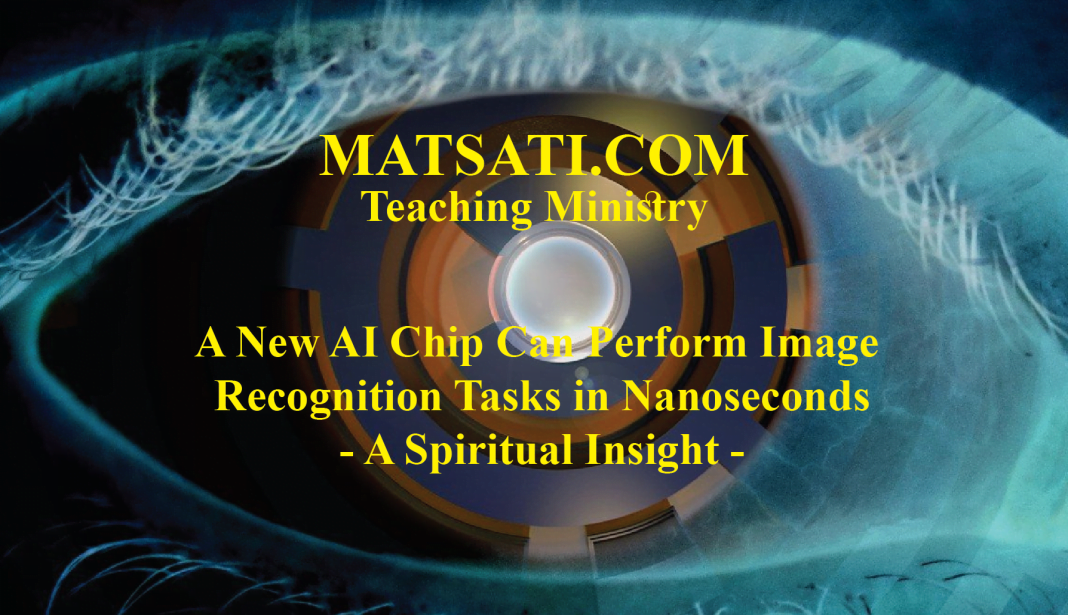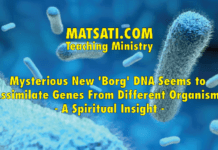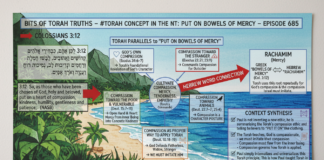A new type of artificial eye has been developed [1] for the purpose of image processing. Machine learning technology has gone through leaps in technological advancement over the last decade. For image processing, a picture is captured using a frame based camera, it is converted into a digital format using a CCD (charge coupled device sensor), and then processed afterwards using a machine learning algorithm (MLA). This process leads to a large amount of data being passed between devices, sensors, and communication lines, and the end result is low frame rates and high power consumption. As a result, research has proceeded to develop visual data preprocessing techniques to increase the efficiency of the MLA analysis. In order to speed up the frame rates, researchers have developed an image sensor with artificial neural network (ANN) on the sensor such that the sensor can detect (collect image) and process optical images without latency. The device that was developed is a reconfigurable 2D semiconductor photodiode array, and the synaptic weights of the network are stored in a continuously tunable photoresponsivity matrix. The throughput as a result of the coupling of these technologies is reported to be 20 million bins per second. (Note: Statistical data binning is a way to group numbers of more or less continuous values into a smaller number of groups or “bins.”)
References
- Mennel, L., Symonowicz, J., Wachter, S. et al. Ultrafast machine vision with 2D material neural network image sensors. Nature 579, 62–66 (2020). https://doi.org/10.1038/s41586-020-2038-x
The significance of this research is related to the need for computer vision, such as in the application for driverless cars, automated driving, industrial robots, and smart sensors. This technology would allow for machines to respond very quickly to what they see. Image processing is typically very computationally intensive where the bottleneck is in the large amount of visual data that is captured, the mass of data slows the processing down. This sensor design mimics the way animals’ eyes preprocess visual information before passing it to the brain. The researchers manufactured a chip out of a sheet of tungsten diselenide that is only a few atoms thick and etched the material with light-sensing diodes. The light sensing diodes were then wired to form a neural network. The tungsten diselenide material provides unique electrical properties such that the photosensitivity of the diodes can be externally adjusted. The result is the neural network can be trained to classify visual information by adjusting the sensitivity of the diodes until providing the correct dataset. In this way, the smart chip can be trained to recognize stylized and pixelated versions of the letters n, v, and z. This technology is the next step in enabling AI hardware to become more efficient. The chip that was created contains only 27 diodes (sensors) and so its image resolution is limited. However, even though the resolution is limited, several standard supervised and unsupervised MLA tasks were achieved, including classifying and encoding letters. The research paper [1] claims scale up of the on chip neural network would be straight forward. Currently the weights of the ANN are stored in an external memory. For scaleup the weights would need to be stored locally on chip. Such a design could be enabled using a floating split-gate photodetector, once set the detector would remember its responsivity value and deliver a photocurrent of adjustable sign/magnitude. One of the advantages of this technology is the sensors can be trained off-line using computer simulations, and the predetermined photoresponsivity matrix then can be loaded onto the device.
The Spiritual Insights that we receive from this type of research is related to having vision. This is something that Paul spoke about when he wrote his epistle to the Corinthians a second time saying the following:
2 Corinthians 3:1-16
3:1 Are we beginning to commend ourselves again? Or do we need, as some, letters of commendation to you or from you? 3:2 You are our letter, written in our hearts, known and read by all men; 3:3 being manifested that you are a letter of Christ, cared for by us, written not with ink but with the Spirit of the living God, not on tablets of stone but on tablets of human hearts. 3:4 Such confidence we have through Christ toward God. 3:5 Not that we are adequate in ourselves to consider anything as coming from ourselves, but our adequacy is from God, 3:6 who also made us adequate as servants of a new covenant, not of the letter but of the Spirit; for the letter kills, but the Spirit gives life. 3:7 But if the ministry of death, in letters engraved on stones, came with glory, so that the sons of Israel could not look intently at the face of Moses because of the glory of his face, fading as it was, 3:8 how will the ministry of the Spirit fail to be even more with glory? 3:9 For if the ministry of condemnation has glory, much more does the ministry of righteousness abound in glory. 3:10 For indeed what had glory, in this case has no glory because of the glory that surpasses it. 3:11 For if that which fades away was with glory, much more that which remains is in glory. 3:12 Therefore having such a hope, we use great boldness in our speech, 3:13 and are not like Moses, who used to put a veil over his face so that the sons of Israel would not look intently at the end of what was fading away. 3:14 But their minds were hardened; for until this very day at the reading of the old covenant the same veil remains unlifted, because it is removed in Christ. 3:15 But to this day whenever Moses is read, a veil lies over their heart; 3:16 but whenever a person turns to the Lord, the veil is taken away. (NASB)
Here Paul opens with an allusion to Jeremiah 31:31-34 of God writing upon our hearts by His Spirit. This causes us to realize how we are not adequate in ourselves, we fail, we sin, and we need the Lord God Almighty to work in our lives, showing mercy to us, and making a new covenant with us. Paul speaks of the inadequacy of the letter of the Law which is weak and not able to save us by reason of the flesh. (Note, Paul is contrasting the sinfulness of the body to walking in the Spirit.) Paul points to the Spirit of God that we received which gives life! At this point Moshe then draws upon Shemot / Exodus 34:33-35 speaking of the glory of God, found in the letters engraved upon the stone tablets, and what was fading from the face of Moshe. Moshe placed a veil over his face to hide the glory of God that was fading, and Paul relates this to the hardness of heart, how the Torah, upon its reading, there remains a hardness, a veil, an inability to see, to read, and to understand the underlying message about the Messiah. Paul writes that this veil is lifted, it is removed in the Messiah (in Christ). Paul writes “whenever a person turns to the Lord, the veil is taken away.” Note how Paul said “when a person turns to the Lord…” This is important because Paul is saying this is when a person decides to seek the Lord according to the Scriptures, and not in his own way. It is important to understand that the terms of the New Covenant involved the presence of God by His Spirit (the Holy Spirit) dwelling within His people. Paul wrote that the Spirit gives life! Paul makes a Midrash here on the events occurring at Sinai in the giving of the Ten Commandments. Paul’s does not argue for the abolishment of the Torah, its end, but of what is foretold of by the prophets, God’s Torah being written upon the heart, and of the giving of God’s Holy Spirit in our lives to help us to overcome the world. Paul is speaking of the Torah remaining active in a persons heart (being written) and this can only happen by faith in God’s Messiah!
Parashat Ki Tisa details the giving of the Tablets at Sinai, where Moshe went up the mountain, remained 40 days, and received the instructions of God, the Ten Commandments, and how to build the portable sanctuary (Mishkhan, Tabernacle). The Torah states that God gave Moshe the tablets in Shemot / Exodus 31:18, “And he gave to Moses, when he had finished speaking with him on Mount Sinai, the two tablets of the testimony, tablets of stone, written with the finger of God.” Consider what transpired following God giving the Ten Commandments. In Shemot / Exodus 32:1-6 we read about chet ha’egel, where Israel sinned with the golden calf. The point of what was taking place was the people attempted to establish a counterfeit religion that would guide them. While the people waited on Moshe, they grew impatient, the text states “When the people saw that Moses was delayed (בשֵׁשׁ) to come down from the mountain, they gathered themselves together to Aaron and said to him, ‘Up, make us gods who shall go before us. As for this Moses, the man who brought us up out of the land of Egypt, we do not know what has become of him.’” (Shemot / Exodus 32:1-6) Aaron was the mouthpiece of Moshe before Pharoah. He was a leader who commanded the Word of the Lord to a pagan nation. And the people coerced him to create and idol, an egel masekhah, עֵגֶל מַסֵּכָה, or a “molten image.” Why Aaron chose a calf is not clear, but the Ugaritic people believed the “wild bull was the charioteer of the clouds” enabling communication with God; this may have influenced the decision to build a calf. They must have reasoned that an idol of this form added credibility to their pretense of having faith in the LORD. Something to mention though, it was Aaron who said, “these are your gods, O Israel, who brought you up out of Egypt” (32:4). We are told how Aaron “fashioned the calf with a graving tool,” built an altar before it, and then made a proclamation that the following day would be a “feast to the LORD.” The Rabbis explain using Midrash that Aaron said this to buy a little time believing Moshe would return soon. The next morning however, Moshe did not return, and so the people rose to make “peace offerings” to their god upon the altar, they ate, they drank, and then “rose up to play” (32:6). Moshe then come down the mountain being forewarned by God what the people were doing. He smashed the two tablets. Moshe then ascended the mountain of God and interceded for the people to seek the forgiveness of their sins. The Lord commanded Moshe to carve out a set of tablets and he did, and the Lord inscribed again the word of the commandments, and renewed the covenant He had made with the people. Moshe having ascended the second time, and seeing the glory of God’s presence, he did not know that “the skin of his face shone (קָרַן עוֹר פָּנָיו) because he had been talking with God.” (Shemot / Exodus 34:9) The people were afraid because the glory of God shown from Moshe’s face, “And when Moses had finished speaking with them, he put a veil (i.e., masveh: מַסְוֶה) over his face.” It is important to note something here in the text, we are told that whenever Moshe went to speak before the Lord, he would remove the veil and when he would speak to Israel he would put the veil on. (Shemot / Exodus 34:35) The commentary Rabbeinu Bahya, Shemot 34:33:1-2 states that Moshe would remove the veil when delivering the commandments from the Lord to the people, and when finished speaking to them he would place the veil back over his face. This is an interesting nuance to what Paul is writing about regarding the Lord God and His Messiah removing the veil. Jewish tradition teaches that the veil was placed over his face because of his humility. Moshe did not want the people thinking the radiance was anything of his own doing or of his own merit. This caused the people to believe the radiance was due to God’s Torah. According to the sages, Devarim / Deuteronomy 34 states that “His radiance did not diminish and his juices did not leave him” and so Moshe retained the glory of God until the day he died. Paul’s Midrash in 2 Corinthians 3 speaks of this veil and of not being able to see. In the Scientific research, the artificial eye that was developed requires training such that the sensor would be able to preprocess the image before sending it forward for MLA analysis. (Note they modeled this after insect eyes preprocessing before sending signals to the brain.) This preprocessing required weights of the ANN (artificial neural network) that enable the sensor to deliver a photocurrent of adjustable sign/magnitude so the MLA can more quickly perform its analysis. The parallel here is to the veil of Moshe, when after having received the Ten Commandments, the veil concealed the “end/goal of the Torah,” which require preprocessing of a sort, meaning the Lord God reveals this to us by His Spirit in order for our brains to understand how the Torah directs us to seek God’s forgiveness through faith in the Messiah. (Note also the parallel in the priesthood.) It is the Messiah who gives us this weighted vision, being able to see the truth, removing the veil from our eyes such that we can have a relationship with the Lord God of Israel. Paul’s reference to the Spirit writing upon the “tablets of human hearts” also recalls the words of the prophet Ezekiel who said, “And I will give you a new heart, and a new spirit I will put within you. And I will remove the heart of stone from your flesh and give you a heart of flesh. And I will put my Spirit within you, and cause you to walk in my statutes and be careful to obey my rules” (Ezekiel 11:19-20 and 36:26-27). This is the power of God given by His Holy Spirit! The New covenant is marked by a set of principles that rests upon the Lord God Almighty and His Messiah working in our lives and in our hearts. The Spirit of God creates in us a new nature, one that overcomes the “law of sin and death” that is by the flesh, with the “the law of the Spirit of life in Yeshua the Messiah.” (Romans 8:2-4) This is why Paul writes “The LORD is the Spirit, and where the Spirit of the Lord is, there is freedom.” (2 Corinthians 3:17) It is in this way that the Lord God Almighty Himself is living and working in us moving us towards obedience to His Word. The Torah functions as a plumb-line to measure the intention and evil impulses of the heart. The problem is not with the Torah, but with the underlying condition of the heart and the flesh. This is why we are in need of a transformation of heart, and this is what the New Covenant is all about with God’s Spirit literally dwelling within. True inner transformation comes exclusively through the work of the Holy Spirit in our lives. We are given newness of life, a spiritual rebirth, and the ability to walk in love, mercy, and forgiveness, these three things transcend the Torah in the sense that the one who does these things does not violate the command. This is what Paul meant when he wrote about walking according to the Spirit. When we do so we are not walking in sin, remember, this is part of the role of the Spirit of God in our lives to keep us from sin! To sin is disobedience to the Torah. This marks the followers of Yeshua as Paul wrote, “the fruit of the Spirit is love, joy, peace; longsuffering, generosity, acts of kindness, faithfulness, humility, and modesty, against such there is no law.” (Galatians 5:22-23) Note again how that this does not mean the Torah has passed away. If we live by the Spirit by the power of God we will not violate the commandment (meaning we will not sin). It is the Lord God who is living and working in us, and not our working alone apart from God. This is what we must understand in order to avoid confusion between the Torah of Moshe and the Torah of Yeshua. The followers of Yeshua have Torah, it is based upon the covenant we have in Yeshua the Messiah, and the confirmation of God’s covenant promises given evidence by the presence of God that dwells in our midst (in our hearts). This distinction is significant because this defines how we are led by the Spirit of God to walk in truth, justice, righteousness, and holiness. The point is, the Scriptures reveal to us how we cannot walk apart from the Messiah and apart from the Spirit of God in our lives. As wonderful as the Torah is, it is death to those who walk apart from the Salvation given in Yeshua the Messiah and apart from the indwelling of the Spirit of God who empowers us, the God of Israel in whom we trust for help! This is why Paul warns of the veil that is to those who are perishing, because those who are perishing are attempting to live according to the Torah (by their own means) without being led by the Spirit of God from within. The gospel message speaks of the Lord God of Israel literally dwelling in our midst, in our hearts, raising us up, delivering us, and empowering us to overcome sin and this world! Realize something here, what I am speaking of here is the fruit of the Spirit and how the fruit of the Spirit must line up with the Torah or else it is not fruit that is from a tree planted in the garden that God takes care of! This is why John wrote what he did in 1 John 5:1-3 saying, “1 Whoever believes that Jesus is the Christ is born of God, and whoever loves the Father loves the child born of Him. 2 By this we know that we love the children of God, when we love God and observe His commandments. 3 For this is the love of God, that we keep His commandments; and His commandments are not burdensome. 4 For whatever is born of God overcomes the world; and this is the victory that has overcome the world—our faith.“ John brings all of these concepts forward, of believing in the Messiah Yeshua, of having the veil removed, of trusting in God to help us obey His word, His Mitzvot (commandments), and of having victory over the world, over sin because of God literally living, moving, and working in our lives demonstrating it is the Lord who is doing all things! The Lord is the One who causes growth and produces (brings forth) the fruit. This is how the scientific research draws out these concepts on why Yeshua said in him we find rest. We are invited to enter into this rest, by exercising our faith in God’s promises, in the Messiah, and in knowing that He is our salvation, our strength, and our hope!









